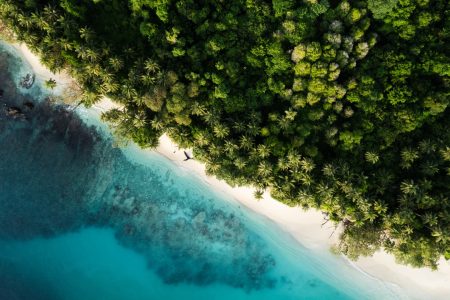When Richard Kvech first set foot on Pinang four years ago, a dilapidated bungalow used by passing fishermen was the only sign of human life on the island.
Kvech and three friends, all from the Czech Republic, slept in hammocks and cooked on the beach, while dreaming of creating an eco-retreat on the 50-hectare Indonesian island off the western coast of Sumatra.
Tomas Ouhel, a member of the group, had come across Pinang while doing conservation work on the nearby island of Bangkaru a year before.
After a year of discussion — among themselves and the two families that own the island — the group, Kvech and Ouhel, along with photographer Stephan Kotas and fertility clinic co-owner Martin Mrazek, signed a 50-year lease to create a small eco-resort on the island, said Kvech.
Building an eco-resort
Using locally sourced wood, the foursome built a guest bungalow and dug wells to access the island’s underground fresh water, before putting up solar panels for electricity, said Kvech. Supply and labor costs were funded by the group’s own pocket, he said.
Tomas Ouhel, second from the right, was the first of four friends to see the Indonesian island. Together with Stephan Kotas, Martin Mrazek and Richard Kvech, the group leased the small island from two families and built an eco-resort.
Source: Segara Bumi Indah
They then built staff quarters, a beachfront communal space and four more guest bungalows, which together can fit 12 people. The main bungalows have bathrooms while the smaller ones share facilities, all of which are connected to an organic septic waste system, said Kvech.
The group also established a fruit and vegetable garden in line with the island’s natural vegetation — an approach known as permaculture — and introduced chickens so guests can have fresh eggs. They compost organic food waste and recycle glass and cans, he said.
There are five guest bungalows, plus a beachside communal space. The eco-resort is “not for people who are looking for a high end vacation … It’s more for people who want to live with nature,” said operator Richard Kvech.
Source: Segara Bumi Indah
The previously uninhabited island received its first paying guests two years ago, said Kvech. Kvech, a former medical travel coordinator, is now in charge of marketing and permaculture at Pinang Island.
“Before we came to Pinang, there was hardly anything on the island — a small pathway around, a collapsed bungalow and a small field. It was really pristine jungle which had not been interrupted by human beings,” Kvech told CNBC Travel.
The eco-resort was built using local materials, like shells, driftwood and coconut wood. Lodgings are described as simple and minimalist.
Source: Segara Bumi Indah
“We are trying to interrupt it as little as possible. It’s such a beautiful island and we don’t want to ruin the pristine nature, so our place only takes up one or two percent of it. There are swamps, bamboo forests, coconut trees, hills. There are hermit crabs, lizards and gumtree snakes….
Read More: Pinang Island is a private island that costs $1,000 per night

